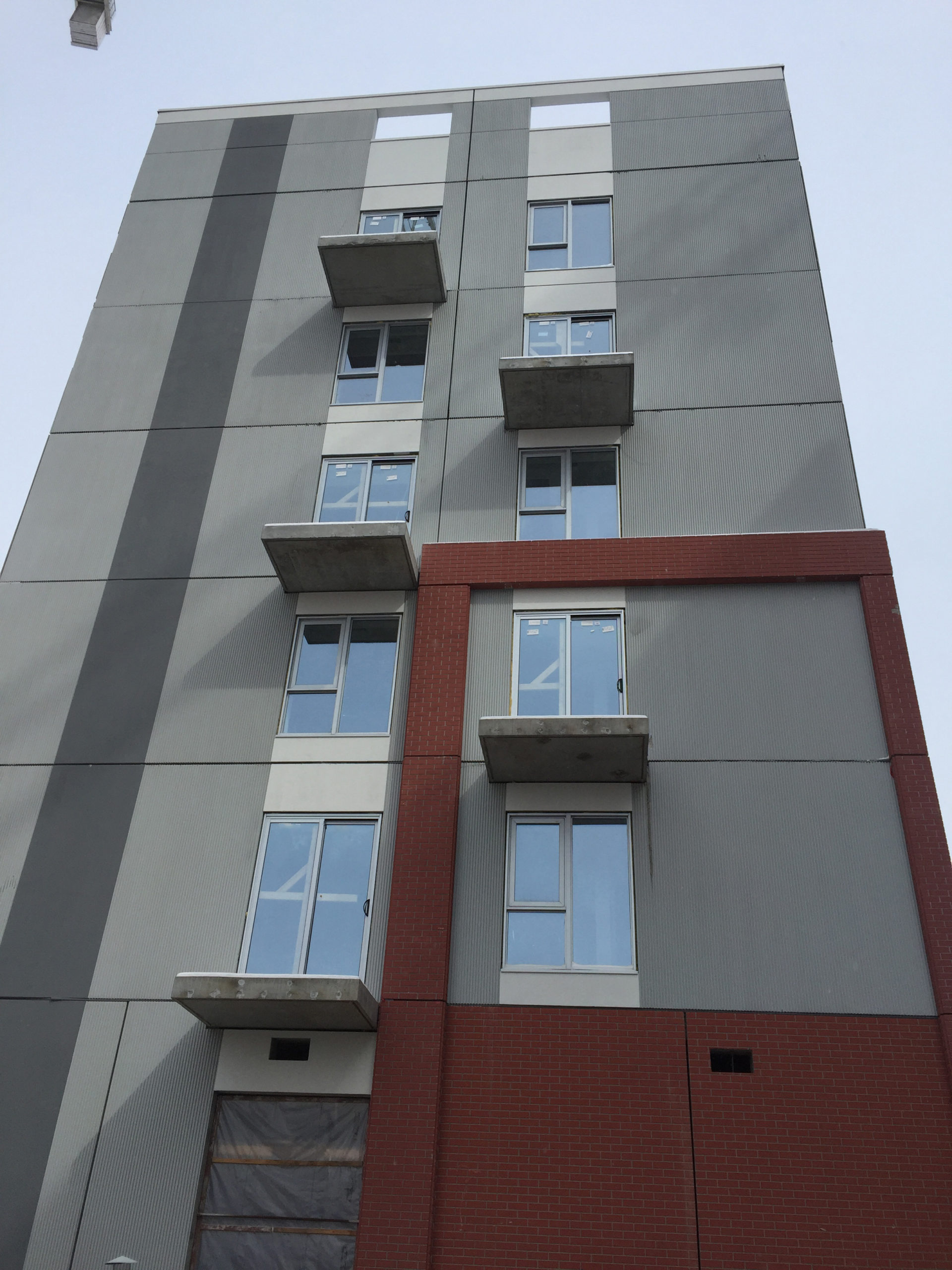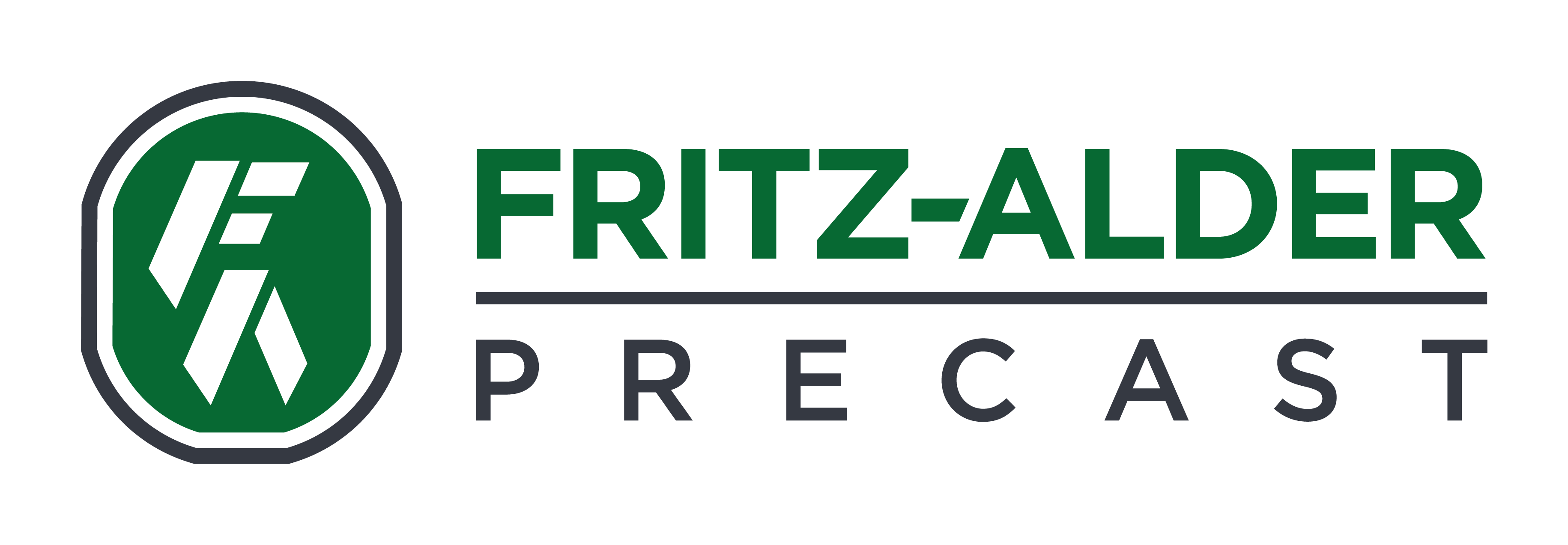Solid Precast Concrete Slabs
SOLID PRECAST SLABS
We believe your project deserves nothing but the best.
That is why Fritz-Alder Precast is your ideal partner for your next construction project.
As a leading provider of precast concrete solutions, we are distinguished by our cutting-edge technology and dedication to customer service. With a strong focus on innovation, we combine advanced technical knowledge and continuous improvement to create unique, value-engineered precast possibilities for your project.
One of our core products, used across many construction applications, is Solid Precast Slabs.

WHAT ARE SOLID PRECAST SLABS?
Solid precast slabs are prefabricated structural elements used in construction projects. They are precast concrete slabs that are manufactured off-site in a controlled environment and then transported to the construction site for installation. These slabs are commonly used in residential buildings, parking structures commercial buildings, and other types of infrastructure.
Solid precast slabs are typically made by pouring concrete into molds or forms that are customized to the desired shape and size. The concrete is reinforced with steel bars or mesh to provide additional strength and durability. Once the concrete has cured and reached the desired strength, the slabs are transported to the construction site.
WHAT ARE THE BENEFITS OF SOLID PRECAST SLABS?
Solid precast slabs offer numerous benefits in terms of efficiency, quality control, versatility, structural performance, durability, safety, and sustainability. These advantages make them a popular choice in construction projects, enabling faster construction, improved quality, and long-term cost savings.
Here are some key benefits of using Solid Precast Slabs:

Stamped or Patterned Finish & Colours
With thousands of mold patterns available, from brick to bamboo to abstract patterns, as well as custom-made designs, Precast Wall Panels can take the shape of any mold and can replicate brick, block, or signature aesthetics, such as photographs, monograms, or custom designs. Precast Wall Panels can also be coated with concrete stain to achieve the desired color and aesthetic to suit your project. The concrete can also be pigmented during production to achieve a through-and-through colour.

Acid-Etched
This finish is achieved by applying a mild acid solution to the concrete’s surface after it has hardened. The acid reacts with the cement matrix and gently etches away the surface, creating a slightly textured, smooth appearance.

Sandblasted
In this process, high-pressure air and sand are used to blast the surface of the concrete. This removes the surface cement paste and exposes the underlying aggregate. The degree of exposure can be controlled to achieve different effects.

Smooth or Off-form
This is the most basic finish where the texture of the formwork is reflected in the concrete, often resulting in a smooth surface.

Exposed Aggregate
This involves removing the top layer of cement paste to reveal the underlying aggregate. The exposure level can be controlled to achieve different aesthetic effects, from lightly exposed where only the edges of the aggregate are visible, to heavily exposed where most of the aggregate is visible.

Polished or Ground
This involves grinding the surface of the hardened concrete to achieve a smooth, glossy finish. It can expose the underlying aggregate, like an exposed aggregate finish, but results in a smooth, polished surface.

Polished or Ground
This involves grinding the surface of the hardened concrete to achieve a smooth, glossy finish. It can expose the underlying aggregate, like an exposed aggregate finish, but results in a smooth, polished surface.

Combination Finishes
As the name suggests, this involves a combination of two or more finishes to create a unique aesthetic effect.
SPECIAL FEATURES OF FRITZ-ALDER SOLID PRECAST SLABS
The characteristics of solid precast slabs, including reinforcing in multiple directions, sloped surfaces, cast-ins, ability to be used in cantilevered conditions, various finishes, curved designs, drip edges, and customization options, provide versatility and adaptability for diverse construction projects. We take pride in adding these special features to our solid precast slabs to further provide our customers with unique construction details.
Here are some key features in more detail:
Reduces Project Risk
Solid precast slabs can be reinforced with steel bars or mesh in multiple directions, enhancing their structural strength and load-bearing capacity. This reinforcement is strategically placed to withstand both vertical and horizontal loads, making the slabs suitable for a wide range of applications, including heavy-duty industrial floors, elevated decks, and parking structures.
Sloped Surfaces
Precast slabs can be manufactured with sloped surfaces, allowing for efficient drainage in areas such as parking lots, balconies, or outdoor recreational spaces. The sloping design ensures proper water runoff, reducing the risk of water pooling and enhancing safety.
Cast-ins
Solid precast slabs can incorporate various cast-in elements during the manufacturing process. These cast-ins include embedment plates, sockets, anchor bolts, or other attachments that are integrated into the slab structure. Cast-ins provide convenient connection points for other structural components or fixtures, enabling efficient installation and reducing on-site labour and time.
Cantilevered Conditions
Precast slabs are well-suited for cantilevered conditions, where a portion of the slab extends beyond its support. This allows for the creation of architectural features such as balconies, overhangs, or protruding platforms. The inherent strength of precast concrete, combined with careful design considerations, ensures stability and structural integrity in such applications.
Unlimited Finishes
Solid precast slabs can be manufactured in any colour, texture or shape to meet aesthetic and functional requirements. They can be manufactured with different surface textures, including smooth finishes for applications such as indoor flooring or decorative surfaces. Non-slip finishes, achieved through various techniques like texturing or surface treatments, are commonly used for outdoor areas where slip resistance is essential for safety.
Curved Designs
Precast slabs can be manufactured with curved profiles, allowing for the creation of architectural features or unique design elements. Curved slabs offer aesthetic appeal and can be used in applications such as curved walkways, staircases, or curved walls.
Drip Edges
Solid precast slabs can be designed with drip edges, which are raised or sloped edges that help divert water away from the slab surface. Drip edges are commonly used in areas prone to rain or water exposure, such as balconies, terraces, or roofs. They help prevent water from flowing back onto the slab surface, reducing the risk of water damage, and improving overall durability.
Customization
Precast slabs offer extensive customization options. Manufacturers can accommodate a wide range of design requirements, including unique shapes, sizes, and configurations. This flexibility allows architects and designers to explore creative possibilities and implement specialized features or details into the precast slabs.
